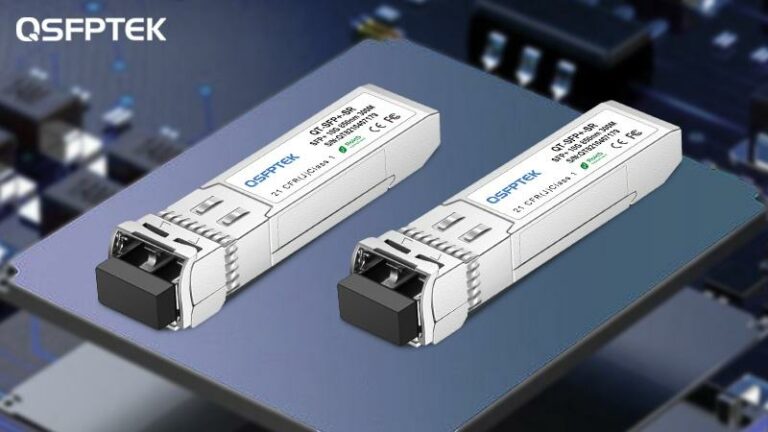Transmiting Part
The emission part of 10G SFP+ LR optical module designed in this paper includes laser, laser drive circuit and so on.
Laser is the core device of optical module transmitting part. It provides light source for optical module communication. Its performance determines the performance of the whole optical transceiver system. The main work of the laser is to convert the user’s electrical signal into an optical signal containing communication information under the modulation of the laser drive circuit. Considering the size, maturity and ease of use of the device, the laser used in this design is the lc-tosa module, which is composed of a 1310nm DFB laser and a backlight detector.
The main function of the laser driving circuit is to provide the ideal bias current and modulation current for the laser, drive the laser to emit light, and realize the electro-optical conversion of communication data. The high-speed laser drive circuit has high requirements for the modulation rate. 10G optical transceiver requires the modulation rate of the drive circuit to be more than 10gbit/s, that is, the rise / fall time of the optical signal is less than 50ps.
In the emission part of this design, max3946, a high-speed laser driver chip produced by Maxim company, is selected as the main chip of the driving circuit. Max3946 can drive laser devices with internal resistance of 5 to 50, the communication rate can cover 1Gbps to 11.3gbps, and it is equipped with input equalization circuit and output pre-emphasis circuit. The operating temperature covers -40 ℃ ~ 85 ℃, and it is small in size and low in power consumption [1]. The high-speed laser drive circuit composed of max3946 can meet the requirements of this design.
Receiving Part
The receiving part of the 10G optical module is composed of photodetector assembly, amplification circuit, etc.
Photodetector assembly is the core component of 10G optical module receiving part. It provides optical detection for optical module communication, and its performance also determines the performance of the entire optical transceiver system. The detector component selected in this design is pin tube lc-rosa component, and its receiving wavelength is from 1260nm to 1650nm.
The main function of the signal amplification circuit is to amplify the weak photocurrent signal generated by the photodetector with appropriate gain. Because the photocurrent generated by the photodetector is very weak, the multi-stage amplification circuit is adopted, that is, the former stage amplification circuit is used to detect weak signals and amplify them with low gain, and the latter stage circuit amplifies the signals amplified by the former stage circuit with appropriate gain. This can form an efficient amplification network, which can not only detect small signals without distortion and amplify weak signals with appropriate gain, but also effectively suppress noise and interference.
There are two kinds of preamplifiers commonly used in optical modules: high impedance amplifier and transimpedance amplifier. High resistance amplifier uses large load resistance to obtain high sensitivity and low noise, but the bandwidth and dynamic range are relatively poor; The trans impedance amplifier adopts the structure of large input impedance negative feedback, which makes the design simple, and can obtain higher bandwidth and larger dynamic range, so the trans impedance amplifier is used more. This design uses the transimpedance amplifier as the preamplifier of the receiving part.

0 Comments